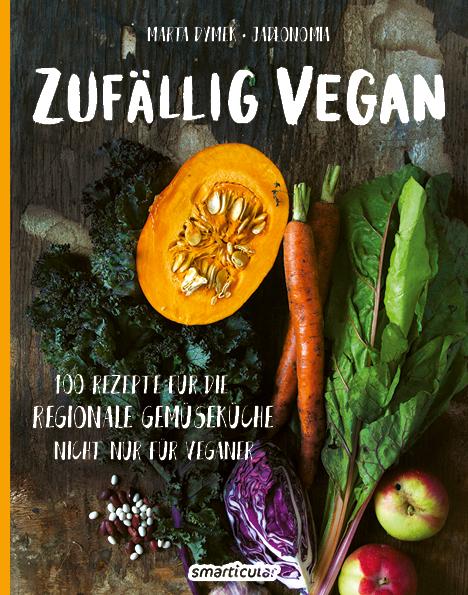Cauliflower-Corn Chowder with Leek and Celery
vegan
Ingredients (for servings, )
| 1 | Corn cobs, raw (sweet corn, organic?) (11 oz) |
| 1 small | Cauliflower, raw (organic?) (12 oz) |
| 1 stalk, cleaned | Leek, raw (organic?) (3.1 oz) |
| 1 stalk | Celery (bleached celery), raw (organic?) (1.1 oz) |
| 5 | Tomatoes, dried (raw?, organic?) (0.88 oz) |
| 3 tbsp | Rapeseed oil, refined (organic?) (1.5 oz) |
| 500 ml | Vegetable broth without added salt (organic?) (17 oz) |
| 2 leaves | Bay laurel (raw? organic?) (0.01 oz) |
| 1 | Allspice, seeds (raw?, organic?) (0.00 oz) |
| ½ tsp | Paprika powder, hot (raw?, organic?) (0.04 oz) |
| ¼ tsp | Chili powder (raw?, organic?) (0.02 oz) |
| 1 liter | Oat milk (oat drink, raw?, organic?) (35 oz) |
| 1 bunch | Spring / leek / winter onions, raw, organic? (6.1 oz) |
| 2 dash | Nutmeg, ground or grated (raw, organic?) (0.01 oz) |
| 1 dash | Table salt (table salt, raw?, organic?) (0.01 oz) |
| 1 dash | Black pepper (organic?, raw?) (0.00 oz) |
Equipment
- stove
- saucepan
Type of preparation
- cook
- chop or grind
- braised
Preparation
Preparing vegetables
Separate the corn kernels from the cob (discard the empty cob). Divide the cauliflower into very small florets, slice the celery and leek and chop the tomatoes.Preparation of the soup
Heat the oil in a pan. Add the vegetables and spices (bay leaves, allspice, paprika and chili powder) and simmer for ten minutes, stirring occasionally.The author uses dried tomato oil and smoked paprika powder (e.g. Pimentón de la Vera).
In the meantime, chop the spring onions. Pour the plant-based drink over the braised vegetables and simmer for 10-15 minutes (the author says 15-20 minutes) over a low heat until the cauliflower is soft.
The author has generally specified plant milk - we chose oat milk. Of course, you can also use any other plant milk (e.g. soy milk, hazelnut milk, rice milk, almond milk).
Finishing and Serving
Depending on how thick the soup is, add all or part of the stock. Season with freshly grated nutmeg, salt and pepper. Add three quarters of the spring onions and mix well.Serve with a tablespoon of spring onions and, if desired, with delicious bread.
The author recommended 500-750 ml of vegetable stock. You can find a recipe for this on page 276 in the same book. We chose 500 ml of extra low-salt vegetable stock (see tips).
Side dish: According to the author, in addition to a slice of bread, sweet potatoes, butternut squash and celeriac are also suitable as side dishes.
|
Nutritional Information per person
Convert per 100g
|
2000 kcal | |
|---|---|---|
| Energy | 495 kcal | 24.7% |
| Fat/Lipids | 19 g | 27.8% |
| Saturated Fats | 3.2 g | 16.2% |
| Carbohydrates (inc.dietary fiber) | 74 g | 27.6% |
| Sugars | 20 g | 22.6% |
| Fiber | 10 g | 40.6% |
| Protein/Albumin | 11 g | 22.6% |
| Cooking Salt (Na:262.9 mg) | 668 mg | 27.8% |
| Essential micronutrients with the highest proportions | per person | 2000 kcal | |
|---|---|---|---|
| Vit | Vitamin K | 144 µg | 192.0% |
| Min | Manganese, Mn | 1.5 mg | 77.0% |
| Vit | Vitamin C (ascorbic acid) | 59 mg | 73.0% |
| Vit | Vitamin B6 (pyridoxine) | 0.92 mg | 66.0% |
| Vit | Vitamin B9, B11 (Folate, as the active form of folic acid) | 126 µg | 63.0% |
| Vit | Vitamin B1 (Thiamine) | 0.61 mg | 55.0% |
| Fat | Linoleic acid; LA; 18:2 omega-6 | 5.0 g | 50.0% |
| Elem | Potassium, K | 976 mg | 49.0% |
| Elem | Phosphorus, P | 321 mg | 46.0% |
| Prot | Threonine (Thr, T) | 0.42 g | 45.0% |
Detailed Nutritional Information per Person for this Recipe
The majority of the nutritional information comes from the USDA (US Department of Agriculture). This means that the information for natural products is often incomplete or only given within broader categories, whereas in most cases products made from these have more complete information displayed.
If we take flaxseed, for example, the important essential amino acid ALA (omega-3) is only included in an overarching category whereas for flaxseed oil ALA is listed specifically. In time, we will be able to change this, but it will require a lot of work. An “i” appears behind ingredients that have been adjusted and an explanation appears when you hover over this symbol.
For Erb Muesli, the original calculations resulted in 48 % of the daily requirement of ALA — but with the correction, we see that the muesli actually covers >100 % of the necessary recommendation for the omega-3 fatty acid ALA. Our goal is to eventually be able to compare the nutritional value of our recipes with those that are used in conventional western lifestyles.
| Essential fatty acids | per person | 2000 kcal |
|---|---|---|
| Linoleic acid; LA; 18:2 omega-6 | 5.0 g | 50.0% |
| Alpha-Linolenic acid; ALA; 18:3 omega-3 | 0.88 g | 44.0% |
| Essential amino acids | per person | 2000 kcal |
|---|---|---|
| Threonine (Thr, T) | 0.42 g | 45.0% |
| Tryptophan (Trp, W) | 0.11 g | 44.0% |
| Leucine (Leu, L) | 1.0 g | 42.0% |
| Valine (Val, V) | 0.57 g | 35.0% |
| Isoleucine (Ile, I) | 0.41 g | 33.0% |
| Phenylalanine (Phe, F) | 0.48 g | 31.0% |
| Lysine (Lys, K) | 0.54 g | 29.0% |
| Methionine (Met, M) | 0.18 g | 20.0% |
| Vitamins | per person | 2000 kcal |
|---|---|---|
| Vitamin K | 144 µg | 192.0% |
| Vitamin C (ascorbic acid) | 59 mg | 73.0% |
| Vitamin B6 (pyridoxine) | 0.92 mg | 66.0% |
| Vitamin B9, B11 (Folate, as the active form of folic acid) | 126 µg | 63.0% |
| Vitamin B1 (Thiamine) | 0.61 mg | 55.0% |
| Vitamin B3 (Niacin) | 4.5 mg | 28.0% |
| Vitamin B5 (Pantothenic acid) | 1.4 mg | 24.0% |
| Vitamin A, as RAE | 185 µg | 23.0% |
| Vitamin B2 (Riboflavin) | 0.28 mg | 20.0% |
| Vitamin E, as a-TEs | 2.5 mg | 20.0% |
| Vitamin B7 (Biotin, ex vitamin H) | 9.8 µg | 20.0% |
| Essential macroelements (macronutrients) | per person | 2000 kcal |
|---|---|---|
| Potassium, K | 976 mg | 49.0% |
| Phosphorus, P | 321 mg | 46.0% |
| Magnesium, Mg | 156 mg | 42.0% |
| Sodium, Na | 263 mg | 33.0% |
| Calcium, Ca | 131 mg | 16.0% |
| Essential trace elements (micronutrients) | per person | 2000 kcal |
|---|---|---|
| Manganese, Mn | 1.5 mg | 77.0% |
| Copper, Cu | 0.42 mg | 42.0% |
| Iron, Fe | 5.4 mg | 39.0% |
| Zinc, Zn | 2.9 mg | 29.0% |
| Selenium, Se | 10 µg | 18.0% |
| Iod, I (Jod, J) | 13 µg | 9.0% |
| Fluorine, F | 1.2 µg | < 0.1% |
"Accidentally Vegan - 100 Recipes for Regional Vegetable Cooking - Not Just for Vegans" contains many new, creative, everyday recipe ideas for everyone.
Since this book is written in German, a description is omitted here. If you are interested, please switch to German in the menu.
Cauliflower-corn chowder with leeks and celery is sweet and spicy at the same time and quite filling.
Serving size: The author did not specify a serving size. We defined the dish as a light main course for 4 people.
Nutrient profile: According to GDA guidelines, one portion of this recipe covers the average daily requirement of vitamin K. Vitamin C, folic acid, vitamin B6, vitamin B1 and manganese are covered by over 100%. The ratio of omega-6 to omega-3 fatty acids is 6:1, just above the maximum recommended ratio of 5:1. More on this under: Vegans often eat unhealthily. Avoidable nutritional errors.
However, the vegetables lose some of their nutrients when heated during cooking. Since the nutrient profile refers to the uncooked ingredients, the values are actually somewhat lower.
Cauliflower: Cauliflower is one of the most easily digestible brassicas. The white cauliflower is the most popular of its kind, but it is also available in orange, purple and green. It has a high vitamin C content and is also rich in B and K vitamins. However, the cooking process means that cauliflower quickly loses many of its nutrients. In addition to eating it raw, more gentle ways of preparing it include steaming (see "Alternative preparation").
Allspice: Jamaica is the main growing area for allspice plants. Allspice is particularly popular in Caribbean cuisine. Its rich flavor is reminiscent of pepper, cinnamon, nutmeg and cloves. This is why allspice is also known as four-spice or all-spice.
Bay leaves: The shiny, aromatic leaves of the bay laurel can be used fresh or dried. They have a unique piquant, spicy aroma.
Low-salt vegetable stock: We use extra low-salt vegetable stock to reduce the overall amount of salt without sacrificing flavor. Use your own preference as a guide when adding salt to this dish.
Homemade vegetable stock: By making salt-free vegetable stock, the salt content can be reduced significantly. Access our recipe via this link: Vegan vegetable stock. Adjust the amount of stock depending on how concentrated it is. Add salt as needed before serving. You can also use the recipe provided by the author on page 276.
Cold-pressed oils are not suitable in this case, as they can only be heated slightly, in the case of cold-pressed rapeseed oil up to a maximum of 120 °C, as otherwise harmful substances are created. See the following link ( cold-pressed rapeseed oil). But refined rapeseed oil should also be heated up to a maximum of 180 °C. Under no circumstances should it start to smoke, although decomposition will begin before that.
Steaming instead of cooking: If you steam the cauliflower instead of boiling it, the vitamins are better preserved. You can then add the steamed cauliflower at the very end.
Side dish: According to the author, in addition to a slice of bread, sweet potatoes, butternut squash and celeriac are also suitable as side dishes.
Plant drink: The author has specified plant milk in general - we chose oat milk. You can of course also use any other plant milk (e.g. soy milk, hazelnut milk, rice milk, almond milk).




